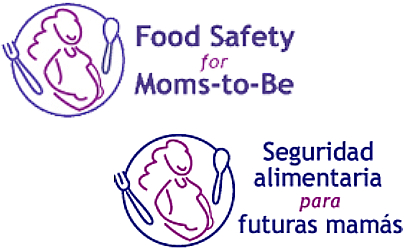Editor’s note: This column by Luis Delgadillo of the food safety education staff at the USDA’s Food Safety Inspection Service was first published by USDA on Dec. 22. Most expectant mothers know about the dangers of consuming alcohol while pregnant and opt for sparkling juices instead of champaign to toast the New Year. But, many may not realize certain foods carry extra hazards for them and their unborn children.
 The holiday season is full of culinary treats. During this time, pregnant women should be especially diligent about food safety. Around the holidays, some seemingly safe foods can have adverse effects on the health of mother and child, so we put together these easy-to-follow tips.
The holiday season is full of culinary treats. During this time, pregnant women should be especially diligent about food safety. Around the holidays, some seemingly safe foods can have adverse effects on the health of mother and child, so we put together these easy-to-follow tips.
When pregnant, a woman’s immune system is weaker. This places the mother and her unborn baby at increased risk of contracting bacteria, viruses, and parasites that cause foodborne illness, including Listeria monocytogenes and Toxoplasma gondii.
Listeria monocytogenes is a harmful bacterium found in foods such as lunch meats, cold cuts and raw milk. It can grow slowly at refrigerator temperatures and can lead to a disease called Listeriosis, which can cause miscarriages, premature delivery, serious sickness or death of a newborn baby.
Toxoplasma gondii is a parasite found in numerous food sources, as well as in cats’ litter boxes and other areas where cat feces can be found. Toxoplasmosis can cause hearing loss, intellectual disabilities and blindness in children.
Skip the raw eggnog and unpasteurized apple cider
Food blogs and recipe websites are usually abuzz with a bounty of eggnog and apple cider recipes, but don’t rush to the punch bowl too soon.
Some eggnog may contain raw eggs and unpasteurized raw milk, which could contain Salmonella. This can cause diarrhea, fever, and abdominal pains.
With raw milk and raw cider, there is a danger of E. coli bacteria, which can lead to stomach cramps, diarrhea, or death. Such beverages pose a risk to you and your pregnancy.
Avoid downloading these apps onto your plate

Soft cheeses and cold cuts, though tempting, should be avoided by pregnant women. Soft cheeses like brie, camembert, blue cheese and cheeses that may have been made with unpasteurized milk like “queso fresco” and feta. Raw milk can carry pathogens such as E. coli, Salmonella, Listeria and others that are killed when milk is pasteurized.
Instead of soft cheese, opt for classic cheeses like cheddar, Swiss, mozzarella, or cream cheese. If cold cuts are necessary, they should first be heated to steaming hot or to a minimum temperature of 165 degrees F.
Holiday ceviche, and other raw fish dishes, pose a higher food safety risk because they may contain parasites or bacteria. In some Hispanic cultures these dishes may be served at Christmas, but it is best to stay away from them year-round while pregnant. Instead, be sure that any fish dishes are cooked to a minimum internal temperature of 145 degrees F.
Some traditions call for chitterlings, or chitlins, around the holidays. This dish poses a greater risk of foodborne illness to expectant mothers, specifically from the bacteria Yersinia enterocolitica.
Since preparing chitlins can be messy and labor intensive, it can increase the risk of cross contamination in the kitchen. Without safe preparation and careful clean up, bacteria left on the counter top or in the sink can contaminate other foods and utensils.
(To sign up for a free subscription to Food Safety News, click here.)
